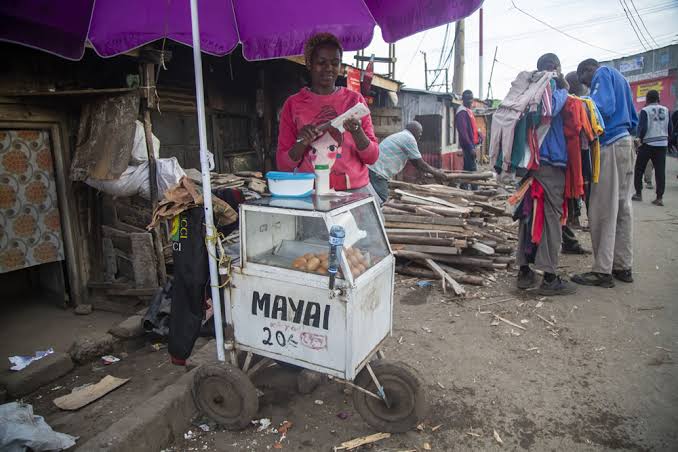TUK Students’ Strike Paralyzes Nairobi CBD as Protests Erupt Over University Closure
Nairobi, February 25, 2025 – Chaos reigned in Nairobi’s Central Business District (CBD) today as students from the Technical University of Kenya (TUK) took to the streets in a fiery protest against the prolonged closure of their institution. The demonstration, which saw police deploy tear gas to disperse the crowd, underscores the deepening crisis in Kenya’s higher education sector, with TUK at the epicenter of a standoff between students, lecturers, and the government.
The unrest began in the morning when hundreds of TUK students gathered, armed with placards and chants, demanding immediate government intervention to reopen their university. The institution has been indefinitely shuttered since February 3, following a lecturers’ strike over unpaid salaries—a grievance that has festered since September 2024. Today’s protest saw students march toward the Ministry of Education headquarters at Jogoo House, hoping to confront Education Cabinet Secretary Julius Ogamba and press for answers. However, their procession was met with a heavy police presence, and tear gas canisters soon filled the air, scattering the crowd and disrupting activities across the CBD.
The students’ frustration stems from weeks of academic limbo. On February 3, TUK’s University Senate suspended all diploma and undergraduate examinations scheduled for February 3-15, citing an ongoing industrial action by staff affiliated with the Universities Academic Staff Union (UASU) and the Kenya Universities Staff Union (KUSU). The university ordered students to vacate campus premises that same day, leaving thousands stranded with no clear timeline for resuming studies. The lecturers’ strike, which began on January 23, was sparked by months of delayed salary payments and unremitted statutory deductions, issues that have crippled operations at the institution.
Today’s demonstration marked a boiling point for students who feel abandoned by both university management and the government. “We’ve been out of class for weeks, and no one seems to care,” one protesting student lamented as clouds of tear gas billowed around Haile Selassie Avenue. “Our future is at stake, and we won’t stay silent while TUK collapses.” The students’ chants of solidarity echoed through the streets, with some calling for broader accountability, including references to national leadership—a sentiment that has surfaced in similar protests across Kenya’s public universities.
The police response was swift and forceful. Videos circulating online showed officers lobbing tear gas canisters and pushing back students who had ventured close to key government buildings, including the National Treasury and Harambee House. The heavy-handed tactics drew criticism from onlookers, but authorities maintained they were necessary to restore order in the busy commercial hub. Traffic ground to a halt, and motorists were forced to seek alternative routes as the standoff unfolded.
This is not the first time TUK has faced such turmoil. In October 2023, lecturers staged a similar protest in Nairobi’s CBD over delayed September salaries, accusing the university of mismanaging funds disbursed by the government. Today’s events suggest that little has been resolved since then, with the institution now grappling with debts—including a reported KSh 4.1 billion owed to the Kenya Revenue Authority (KRA)—and chronic underfunding. The 2021-2025 Collective Bargaining Agreement (CBA), valued at KSh 9.7 billion, remains unimplemented, further fueling discontent among staff.
Higher Education Principal Secretary Beatrice Inyangala has acknowledged the crisis, stating earlier this month that a Technical Committee is working with TUK management to devise a sustainable recovery plan. “You cannot just wake up overnight and dream up a recovery plan for an institution that has been mismanaged for years,” she said, urging patience as discussions continue. Yet, for students and lecturers alike, patience is wearing thin. The closure has not only disrupted academic schedules but also jeopardized graduation timelines and future opportunities for thousands of learners.
As tear gas dissipated over Nairobi’s skyline this afternoon, the underlying issues at TUK remain unresolved. The students’ bold stand today signals a growing unrest that could ripple across Kenya’s public universities, many of which face similar funding woes. Without swift action from the Ministry of Education and the Treasury, the crisis at TUK risks becoming a symbol of a broader failure to prioritize higher education—a failure that, as one student put it, “history will not forgive.” For now, the streets of Nairobi bear witness to a generation fighting for its future, one protest at a time.









